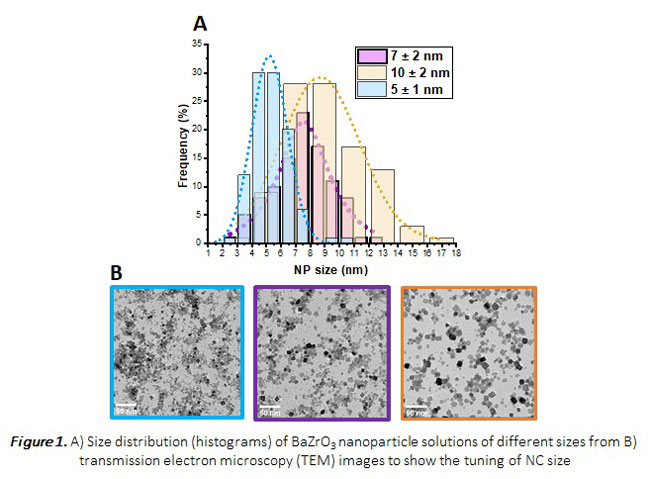WB9-7
Superconducting YBa2Cu3O7-δ nanocomposite films grown by TLAG-CSD from functional colloidal inks
Dec. 1 18:40-18:55
*Diana Garcia1,2, Natalia Chamorro1,2, Kapil Gupta1, Lavinia Saltarelli1, Aiswarya Kethamkuzhi1, Silvia Rasi1, Juri Banchewski1, Jordi Aguilar1, Elzbieta Pach1, Daniel Sanchez-Rodriguez3, Jordi Farjas3, Cristian Mocuta4, Eduardo Solano5, Joffre Gutierrez1, Xavier Obradors1, Ramón Yañéz2, Susagna Ricart1, Teresa Puig1
Institut de Ciència de Materials de Barcelona (ICMAB-CSIC), 08193 Bellaterra, Spain1
Departament de Química, Universitat Autonòma de Barcelona, 08193 Bellaterra, Spain2
University of Girona, GRMT, Department of Physics, Girona, Spain3
Diffabs beamline, Soleil Synchrotron, Paris, France4
NCD-Sweet beamline, ALBA Synchrotron, Cerdanyola del Vallès, Barcelona, Spain5
The growth of Chemical Solution Deposition (CSD) nanocomposites from precursor solutions containing metal preformed nanoparticles has recently proven to be a very good pathway developing low cost YBa2Cu3O7-δ (YBCO) superconducting layers carrying high currents at high magnetic fields by pinning vortices at none superconducting nanoscale defects [1][2].
In our work, we are able to synthesize binary metal oxide NPs using a 2 steps process called hybrid hydrolytic-solvothermal synthesis (H2S2). In the presence of a polyol as surfactant, we have synthesized small-sized, crystalline, monodisperse and stable BaMO3 NPs (M= Zr, Hf). We are able to tune their size in a range of 4 - 20 nm, controlling the hydrolysis step involved in the reaction mechanism [3]. On the other hand, combine H2S2 process with a post-synthetic surface functionalization we have obtained, for the first time, small-sized (4-6 nm) and agglomeration-free BaM2O6 NPs (M= Nb, Ta).
These NPs are being used for the preparation of superconducting nanocomposites using the non-equilibrium ultrafast Transient Liquid Assisted Growth (TLAG-CSD) process. We have developed a fluorine-free functional colloidal ink adapted to TLAG-CSD nanocomposites able to achieve very homogenous and reproducible multideposited films. We have demonstrated the compatibility and stabilization of the colloidal ink, obtaining homogenous pyrolyzed films with crystalline NPs, homogenously distributed without coarsening. Finally, we have further proved the compatibility and chemical/thermal stability of NPs with the TLAG approach [4] and through In-situ synchrotron X-ray diffraction we determined the kinetic process parameters strongly influencing the TLAG growth process. The kinetic phase diagrams developed from In-situ XRD experiments [5] have allowed us to achieve epitaxial YBCO multideposited TLAG nanocomposites obtaining Jc results of 2-2.5 MA/cm2 at 77 k for 400 nm of thickness with smooth Jc(H) curves provided by NP pinning at the fast growth rates of even 1300 nm s-1.
[1] A. Llordés et al., Nat Mater. 6, 2012, 329-36
[2] Z. Li et al., Scientific Reports 9, 2019, 5828
[3] N. Chamorro et eal., RSC Adv. 10, 2020, 28872-28878
[4] L. Soler et al., Nat Commun. 11, 2020, 344
[5] S.Rasi et al., Adv.Sci. 2022, 2203834
Keywords: Superconducting Nanocomposite Films , Colloidal Inks , Chemical Solution Deposition, Transient Liquid Assisted Growth
